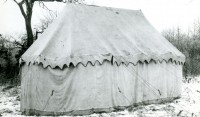 George Washington’s Headquarters Tent was his most consistent office, following him on campaigns for almost the entire duration of the Revolutionary War. He slept there (for real this time!), planned battles, wrote letters, met with his staff and visitors. Washington’s portable headquarters was kept in the family with many other artifacts from his service in the Revolutionary War for generations. It was the Civil War that wrested it from the family. The tent belonged to Mary Custis Lee, great-granddaughter of Martha Washington and wife of Robert E. Lee. After her husband resigned his commission in the United States Army on April 20th, 1861, he set out for Richmond within days, leaving Mary behind at Arlington House in Alexandria, Virginia, the estate she’d inherited from her father George Washington Parke Custis (Martha Washington’s grandson).
George Washington’s Headquarters Tent was his most consistent office, following him on campaigns for almost the entire duration of the Revolutionary War. He slept there (for real this time!), planned battles, wrote letters, met with his staff and visitors. Washington’s portable headquarters was kept in the family with many other artifacts from his service in the Revolutionary War for generations. It was the Civil War that wrested it from the family. The tent belonged to Mary Custis Lee, great-granddaughter of Martha Washington and wife of Robert E. Lee. After her husband resigned his commission in the United States Army on April 20th, 1861, he set out for Richmond within days, leaving Mary behind at Arlington House in Alexandria, Virginia, the estate she’d inherited from her father George Washington Parke Custis (Martha Washington’s grandson).
She, like many on both sides, was sure the war would be over in a matter of months. Mary planned to ride out the short-lived hostilities in the comfort and safety of her home. That fantasy was shattered in less than a month. With the Union troops rapidly approaching, Mary Custis Lee packed a small selection of family treasures, including as many pieces of her Washington collection as she could carry. The headquarters tent and other marquees (she had several Washington tents) were too large to pack, so she locked them in the cellar and gave the keys to her elderly slave Selina Gray. She left Arlington House on May 15, 1861. Union troops occupied it on May 24th, confiscating the Washington field tents and other artifacts. Arlington House became the headquarters of Union General Irvin McDowell and the 1,000-acre plantation became a camp for 14,000 Union soldiers. Mary would never again return to her beloved family home. After the war, the Arlington House plantation was turned into the Arlington National Cemetery.
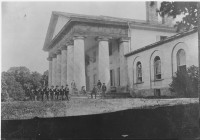 Meanwhile, the cellar key was burning a hole in Selina Gray’s pocket. McDowell was sympathetic to Mary Custis Lee — he wrote her a very kind letter promising to help safeguard her home — and had the utmost respect for her illustrious ancestry, but as the war dragged on into the end of 1861, he was increasingly unable to keep his restive troops from breaking into the house and pocketing any valuables they could find. When Gray saw that the cellar had been broken into and some of the Washington objects were missing, she told McDowell everything. She told him how historically significant these treasures were, gave him the key and a list of the missing artifacts.
Meanwhile, the cellar key was burning a hole in Selina Gray’s pocket. McDowell was sympathetic to Mary Custis Lee — he wrote her a very kind letter promising to help safeguard her home — and had the utmost respect for her illustrious ancestry, but as the war dragged on into the end of 1861, he was increasingly unable to keep his restive troops from breaking into the house and pocketing any valuables they could find. When Gray saw that the cellar had been broken into and some of the Washington objects were missing, she told McDowell everything. She told him how historically significant these treasures were, gave him the key and a list of the missing artifacts.
With no realistic way to keep his men from stealing the house blind by dribs and dabs, McDowell wrote to his bosses in Washington that Arlington House was no longer safe “for the preservation of anything that is known to have an historical interest small or great.” In January of 1862, the tents and all other remaining pieces of the Washington patrimony were sent to the Patent Office in Washington where they went on display within two weeks in an exhibition organized by former Congressman Caleb Lyon called Captured at Arlington. Lyon had visited with the Lees before the war, and he personally saw to the packing, shipping, inventorying and installation of the tents in the Patent Office’s main exhibition hall.
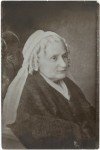 The tents remained on display at the Patent Office for almost 20 years. The disastrous 1877 fire which destroyed 80,000 patent models and 300,000 drawings raised concerns about the safety of the Washington artifacts. In 1881 they were moved to more secure facilities at the Smithsonian Institution.
The tents remained on display at the Patent Office for almost 20 years. The disastrous 1877 fire which destroyed 80,000 patent models and 300,000 drawings raised concerns about the safety of the Washington artifacts. In 1881 they were moved to more secure facilities at the Smithsonian Institution.
Despite her ailing health, Mary never stopped writing to anyone in the federal government who might help her get back her family heirlooms. She was ignored for years. Then for a moment in 1869 it looked like she might prevail after all when President Andrew Johnson approved the return the “relics of Mount Vernon.” He took it back when the press reported the story as the feds giving away all of the Father of Our Country’s stuff to rebel general Robert E. Lee.
 Mary Custis Lee died in 1873 but the struggle lived on with her eldest son George Washington Parke Custis Lee. He petitioned successive administrations for the return of Arlington House and took it all the way to the Supreme Court which ruled in his favor. (Thousands of soldiers were already buried there, so Lee sold the property back to the government. It was the principle of the matter.) Then he hounded them for decades over the Washington memorabilia. Finally it was William McKinley, the last US President to be a Civil War veteran, who ordered the return of the Washington tents and artifacts to George Washington Parke Custis Lee. It was 1901.
Mary Custis Lee died in 1873 but the struggle lived on with her eldest son George Washington Parke Custis Lee. He petitioned successive administrations for the return of Arlington House and took it all the way to the Supreme Court which ruled in his favor. (Thousands of soldiers were already buried there, so Lee sold the property back to the government. It was the principle of the matter.) Then he hounded them for decades over the Washington memorabilia. Finally it was William McKinley, the last US President to be a Civil War veteran, who ordered the return of the Washington tents and artifacts to George Washington Parke Custis Lee. It was 1901.
After a struggle lasting 40 years, the family heirlooms were back in family hands. The Headquarters Tent was sold by Mary Custis Lee, Robert and Mary’s daughter, in 1909 to raise funds for Confederate widows. The buyer was Reverend W. Herbert Burk who spent a whopping $5,000 on it. An avid history buff, he was the founder of the Valley Forge Historical Society and of the Washington Memorial Chapel built at Valley Forge. He also founded the Valley Forge Museum of American History where the Headquarters Tent was erected outdoors in the snow, just like it was in George Washington’s Day. Burk’s extensive Revolutionary War collection, including the tent, became the core of the new Museum of the American Revolution’s collection in 2003.
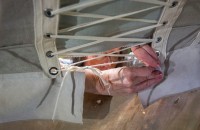 Fourteen years later, the tent will be one of the jewels of the new museum slated to open at long last this April. It needed a lot of care to make it ready for display. Textile conservator Virginia Whelan had to repair the linen’s 550 holes, a large missing piece (likely a victim of the practice of cutting souvenirs from famous textiles like the poor Star Spangled Banner) and numerous stains.
Fourteen years later, the tent will be one of the jewels of the new museum slated to open at long last this April. It needed a lot of care to make it ready for display. Textile conservator Virginia Whelan had to repair the linen’s 550 holes, a large missing piece (likely a victim of the practice of cutting souvenirs from famous textiles like the poor Star Spangled Banner) and numerous stains.
Wearing a thimble but no gloves, Ms. Whelan layered fine, nearly invisible netting over and under each hole, then used polyester thread finer than human hair to stitch around the damage to prevent further fraying. For large tears and the missing piece, she worked with the faculty of Philadelphia University’s textile design department to make high-resolution images of the fabric, which were printed on polyester with a digital inkjet printer.
The whole effort took 525 hours of handwork by Ms. Whelan and an assistant.
Then they had figure out to erect so fragile a textile. The original wooden poles and tent pegs are extant, but they’d be way too rough on the fabric these days.
Alex Stadel, a structural engineer from Keast & Hood, devised the custom base, which looks like two unfurled umbrellas, standing upright and connected by a ridgepole, adding some upright poles on tracks for additional flexibility.
To attach the walls to the tent top, the team avoided iron hooks and eyes that were used in the original design, and chose rare-earth magnets that tether the fabric in place.
The Museum of the American Revolution opens in the historic center of Philadelphia on April 19th, the anniversary of the Battle of Lexington and Concord, the opening salvo of the Revolutionary War.
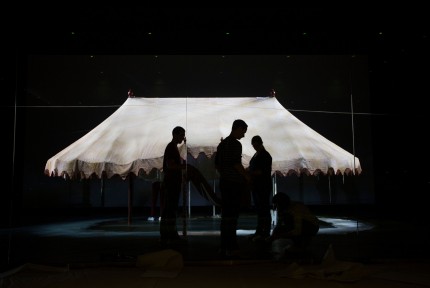
When it comes to historic American tents, there must have been many over the centuries that have come and gone or will soon be gone… However, there never really was but one American-canvas-cover that truly could be acclaimed as the most important – the true BIG TOP and here ’tis: ‘GEORGE WASHINGTON’S TENT!’
P.S. Napoleon’s campaign tent has been preserved too!
Make America camp again !
I find it absolutely incredible that Army General Irvin McDowell and/or his officers could not figure out how to properly secure Arlington House. There must be more to the story.
“Constitution? What Constitution?!”
For people interested in what really happens versus what we’re told happens, have a look at this: https://www.amazon.com/South-Right-James-Ronald-Kennedy/dp/1565540247
Check out the other recommended books, if you dare!
The North was right about slavery, in the end LOL, and the South was pretty much right about everything else. The economic aspects of the War are fascinating.
“One artifact for you, one artifact for me…”
My Grandmother had a great-Aunt that wrote the Fed’s for decades demanding payment for livestock and rolling stock taken by the Yankees in their campaigns in the Great Valley of Virginia. As the Aunt’s brother was one of the main players in the sacking and burning of Chambersburg, PA. in revenge for the Union burning of VMI, The Virginia Military Institute, it wasn’t going to happen. The only thing that gave Cousin Bobby’s wife a snowball’s chance is she was Martha Washington’s Great-Granddaughter.
Grandma’s Great Uncle was said to have buried some of the Chambersburg gold under his house. Treasure hunters have been going over the grounds of that old place with metal detectors since it burned in the late 1960s. Nothing but rusty nails and horseshoes so far.
I get regular calls from an Aunt that are nearly always the same,”Bruce, grab your gun and run those damned peckerwoods off of the old farm, they’re digging holes all over the place.”
If you’d like a metal detector I’ve got plenty in stock. I’ve been at since Grandpa went to hi reward in 1981. They drop them and run like Hell when you yell and raise the gun to your shoulder.
Bruce T, Remover of Metal Detecting Peckerwoods Since 1981.
😆
Thanks for the best laugh of the day…politics and greed never changes!
That book is nothing more than a juvenile rant.
Often military commanders during wartime need to strike a balance between doing what is right and maintaining the morale and control over their troops. Perhaps he thought coming down hard on the soldiers for potential “looting” may have been detrimental to his ability to command them.
Are the laced panels original to the tent’s design, or are they new additions to keep the pressure on the old textile stable and steady?